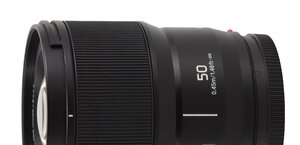Canon EF 50 mm f/1.8 II
5. Chromatic and spherical aberration
The longitudinal chromatic aberration is not corrected in a perfect way - you can notice it by f/1.8 and by f/2.5. In both cases its level is not especially bothersome so there are no reasons to complain a lot.
 |
Please Support UsIf you enjoy our reviews and articles, and you want us to continue our work please, support our website by donating through PayPal. The funds are going to be used for paying our editorial team, renting servers, and equipping our testing studio; only that way we will be able to continue providing you interesting content for free. |
- - - - - - - - - - - - - - - - - - - - - - - - - - - - - - - - - - - - - - - - - - - - - - - -
If you don’t like colorful rims along contrasting edges here comes a piece of good news: the lateral chromatic aberration of the Canon 1.8/50 is really low. By apertures higher than 2.8 it is practically imperceptible; around 1.8-2.0 it is slight which means you have to look really closely to find its traces. It’s worth mentioning that the results we got on the edge of the APS-C sensor and full frame were practically the same.

Below you can find fragments of our ISO testing chart which are positioned in a distance of 65-70% from the field centre. The photos were taken by the Canon EOS 5D MkIII employing f/8.0 and the maximum aperture. It would be difficult to spot any traces of chromatic aberration.
| Canon 5D III, f/1.8 | Canon 5D III, f/8.0 |

|

|
Spherical aberration
The Canon EF 50 mm f/1.8 II didn’t show any „focus shift” effect so the spherical aberration cannot be especially high. Still it would be difficult to say that aberration is corrected in a perfect way and the photos below prove there are some problems. You can notice a distinct difference in the appearance of the edges of the circle. In one case you get a rim and in the other case - just brightness loss near the edge. It is a classic symptom of badly corrected spherical aberration.
| Canon 5D III, f/1.8, in front of | Canon 5D III, f/1.8, behind |

|

|






